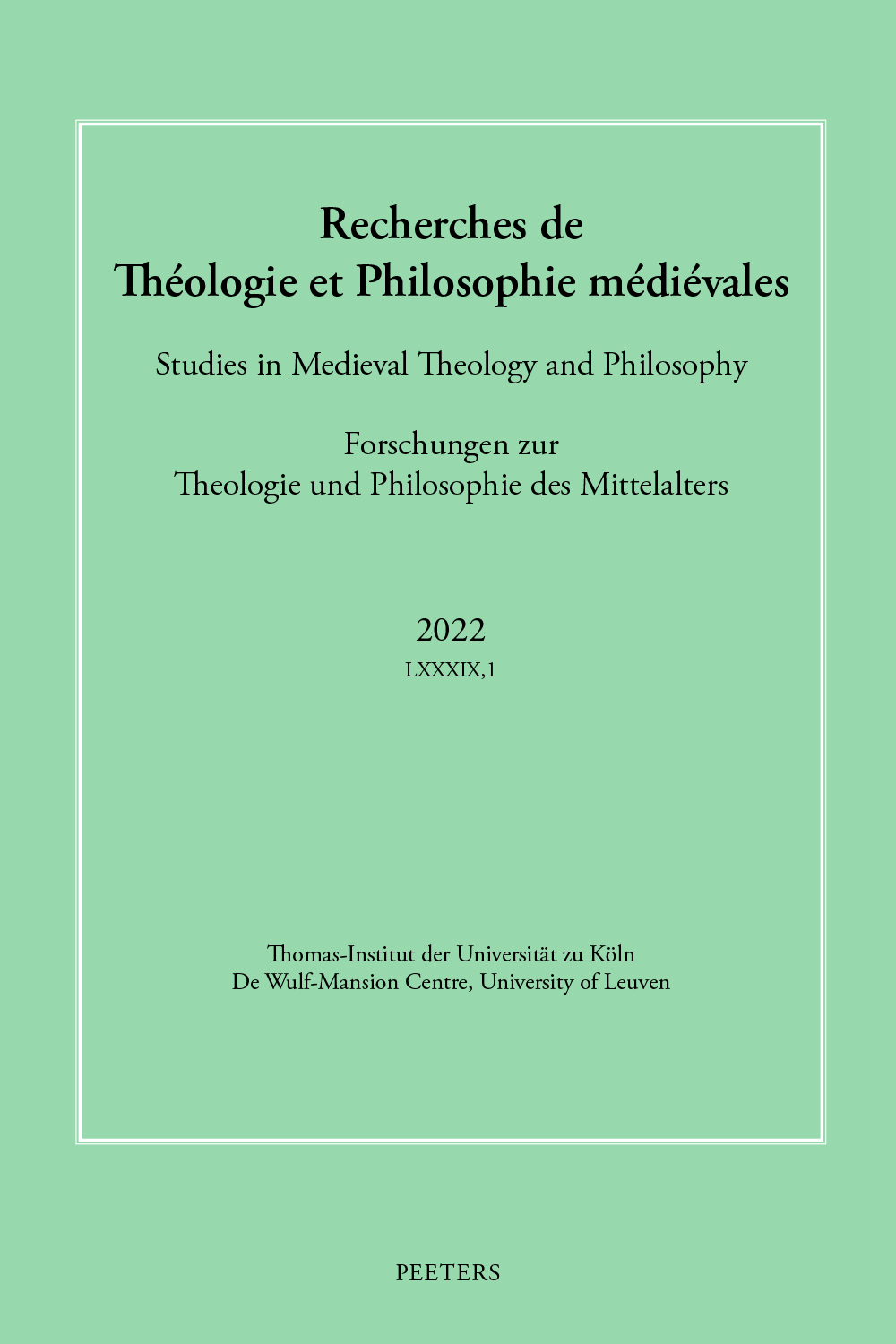 previous article in this issue previous article in this issue | next article in this issue  |

|
Document Details : Title: Richard Swineshead's De luminosis Subtitle: Natural Philosophy from an Oxford Calculator Author(s): PODKOŃSKI, Robert Journal: Recherches de Théologie et Philosophie Médiévales Volume: 82 Issue: 2 Date: 2015 Pages: 363-403 DOI: 10.2143/RTPM.82.2.3129656 Abstract : The fourteenth-century thinkers known collectively as the Oxford Calculators are famous mainly for their complex logico-mathematical theory of motion; it is widely recognized that the most developed version of the Calculators’ methods of scientific inquiry are found in Richard Swineshead’s Book of Calculations. Two of the sixteen treatises that constitute Swineshead’s work are devoted to the action of a light source. The first of these treatises, De luminosis, concerns the measurement of the power of light sources, while the second, De actione luminosi, deals with issues connected with the range and distribution of light in a given medium. With regard to determining the ‘proper measure’ of the power of a light source, Swineshead employs the notion of ‘the amount of form’ (multitudo formae) developed in preceding parts of his Liber calculationum. This notion allows him to correct John Dumbleton’s theory of light. Although Swineshead’s method of ‘measuring’ the power of light sources is impossible to implement in practice, and although the validity of the consecutive conclusions is determined only on the basis of logical and mathematical coherence with no reference to common experience, his arguments should be seen, not as mere sophisticated logical exercises, but rather as a part of natural philosophy. The appendix provides an edition of the treatise De luminosis, based on eight manuscripts. |
|
